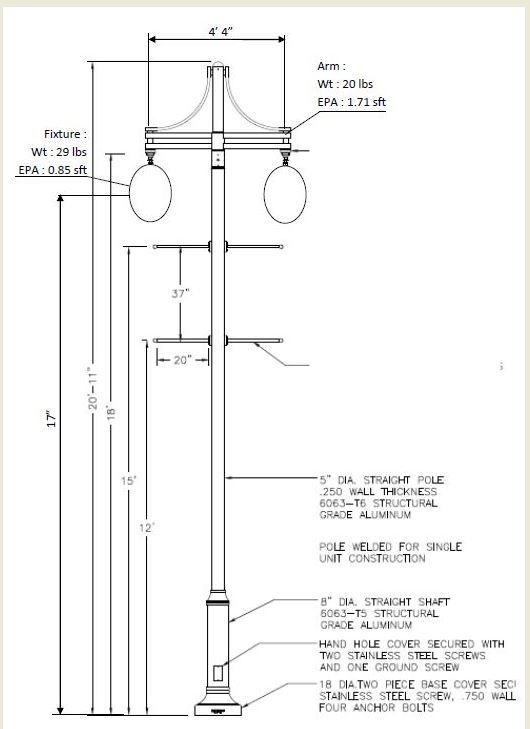greencircle
Mechanical
Guys,
Sorry to ask these questions. With your help I am trying to understand the code & learn the calc procedure.
On one reference calcs i have it says:
ALLOWABLE UNIT STRESSES - 6063-T6 Aluminum Alloy
Allowable Bending Stress: Within 1" of weld
Fa = 18000 x 1.33 x 0.85 = 20349 PSI
Allowable Bending Stress: Greater than 1" from weld
Fa =18000 x 1.33 =23940 PSI
Questions :
1. On the underlined formula, I believe that 0.85 is got to do something about the 85% of the allowable stress. Not sure what the 1.33 is? I couldn't find which of the equation#/formula was used to develop 18000 x 1.33 x 0.85.
2. I believe in the table 6-1 & 6-2 of LTS-6 there is 3 different stresses on the table. Tension, Compression, Shear & bearing. Which of these 4 should be used for Bending?
3. On 6-1 & 6-2 I did not see 18ksi(18000 psi) any where for 6063 alloy. Any idea how this might have obtained?
Thanks
GC
Sorry to ask these questions. With your help I am trying to understand the code & learn the calc procedure.
On one reference calcs i have it says:
ALLOWABLE UNIT STRESSES - 6063-T6 Aluminum Alloy
Allowable Bending Stress: Within 1" of weld
Fa = 18000 x 1.33 x 0.85 = 20349 PSI
Allowable Bending Stress: Greater than 1" from weld
Fa =18000 x 1.33 =23940 PSI
Questions :
1. On the underlined formula, I believe that 0.85 is got to do something about the 85% of the allowable stress. Not sure what the 1.33 is? I couldn't find which of the equation#/formula was used to develop 18000 x 1.33 x 0.85.
2. I believe in the table 6-1 & 6-2 of LTS-6 there is 3 different stresses on the table. Tension, Compression, Shear & bearing. Which of these 4 should be used for Bending?
3. On 6-1 & 6-2 I did not see 18ksi(18000 psi) any where for 6063 alloy. Any idea how this might have obtained?
Thanks
GC



